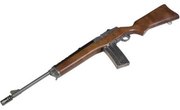What Makes Them Different from Other Matches?
Matches use sulfur, phosphate and a friction agent (such as glass powder) held together by a binding agent. The typical match needs to be rubbed against an abrasive surface that contains red phosphorus. The friction between the two causes a chemical reaction, which turns the red phosphorus to white (a substance that ignites when it comes in contact with oxygen). Strike-anywhere matches contain phosphorus on the match head.
How Do They Work?
Because the phosphorus is incorporated into the match itself, the need for the strike strip is eliminated. For the match to ignite, it simply needs to be rubbed against any abrasive surface to generate the heat needed to activate the phosphorous reaction.
Do They Really Work Anywhere?
Strike-anywhere matches do work when rubbed on just about any rough surface. You can ignite them on cement and rocks, for instance. A healthy beard stubble, as seen in cowboy movies, would require a high, volatile concentration of phosphorus. Some matches are specially treated to work when wet.
Are They Common?
Because phosphorous is extremely flammable and can be accidentally ignited, these matches were made illegal in many places. The volatility led to the invention of safety matches (which require the abrasive, phosphorous containing strip). Chemistry advances have resulted in safer strike-anywhere matches, which can be easily found in retail stores and are common in emergency kits.
Writer Bio
Michael Kozlowski began writing in 2006 and has published fiction in Eternal Press, "The Monsters Next Door" and "Scarlett Literary Magazine." He also has a novel-length travel memoir distributed through ecapeartist.com. He spent many years in the manufacturing and construction trades, traveling extensively. Kozlowski attended Wayne State University for graphic design and fine art.



